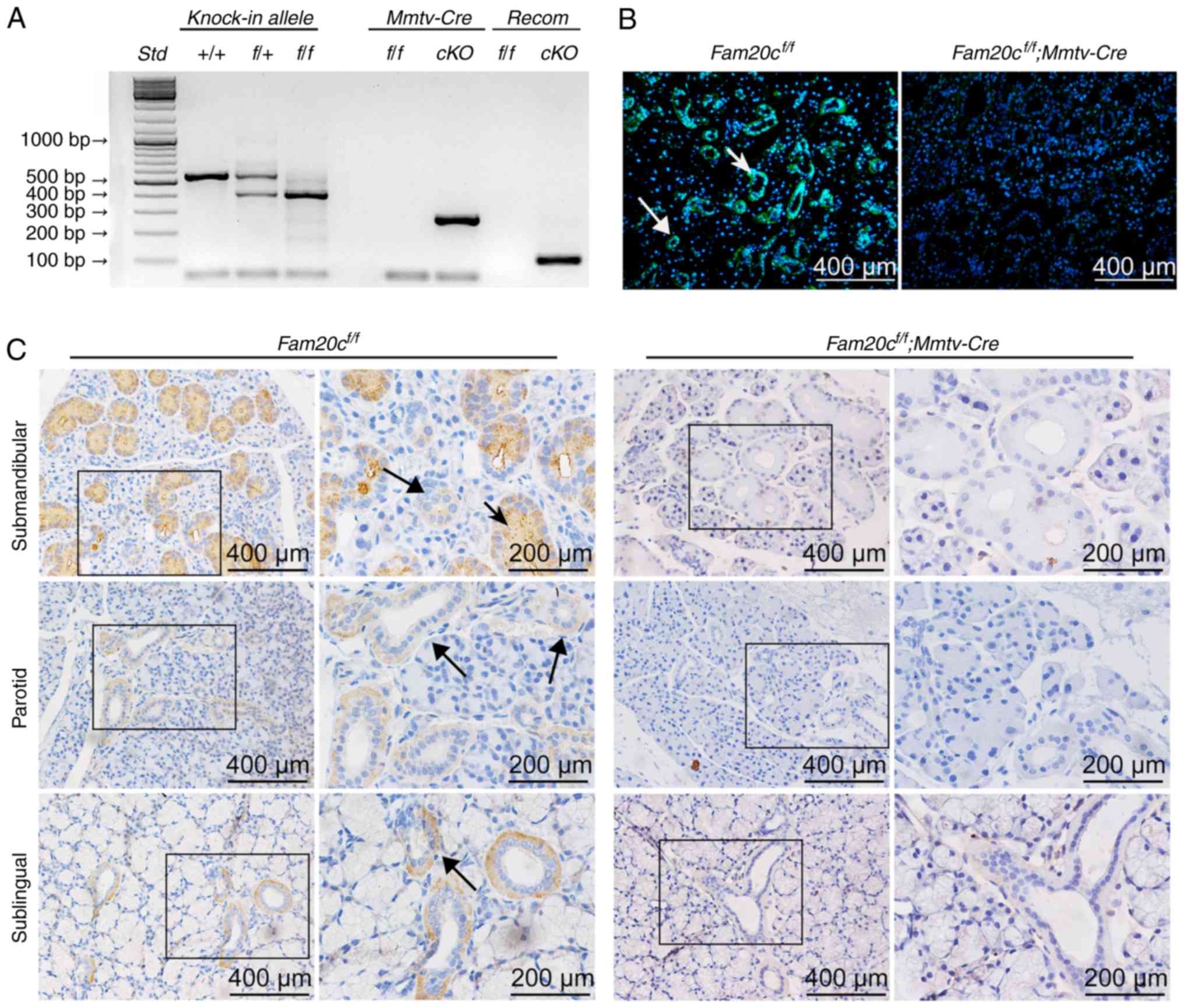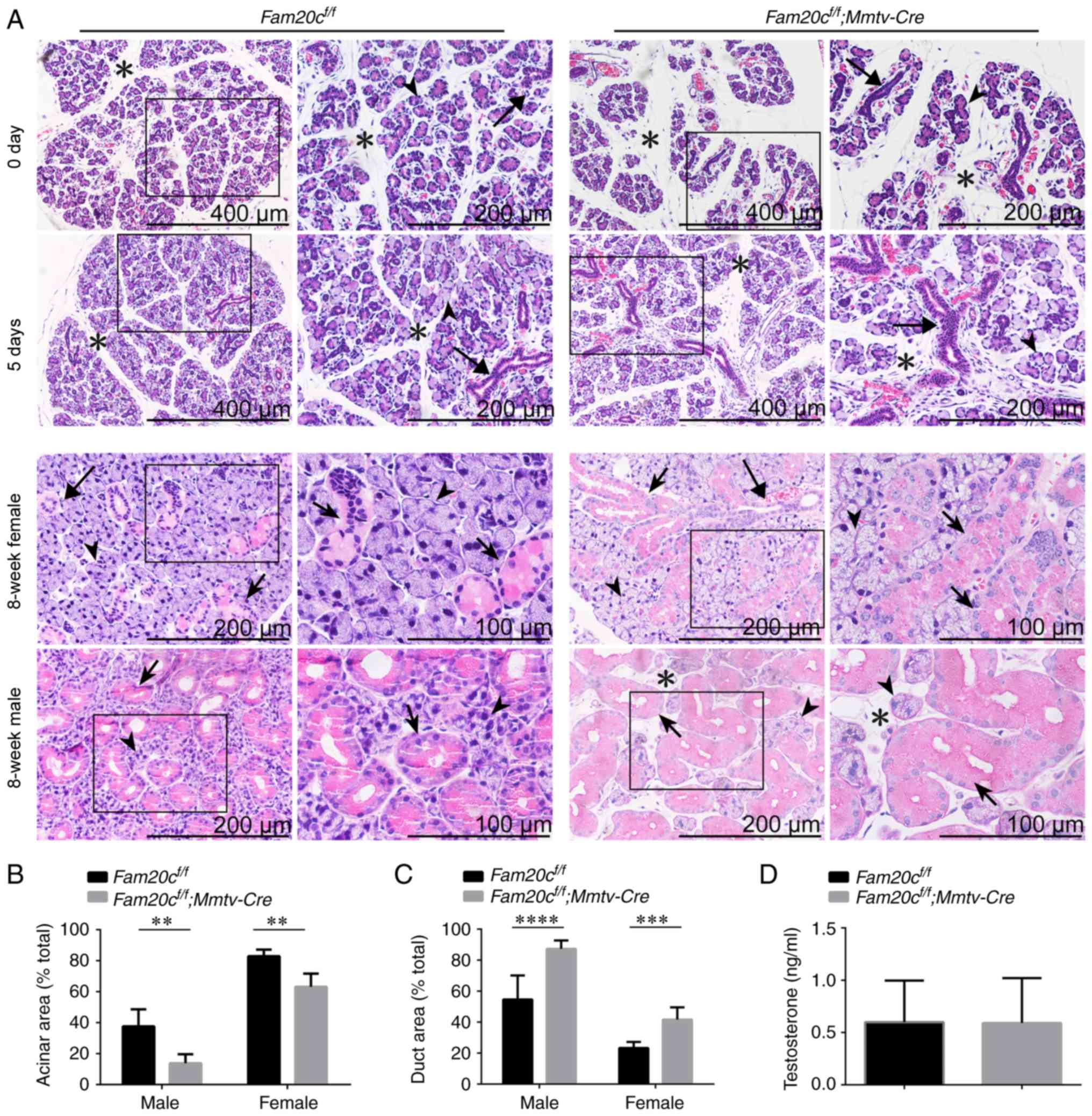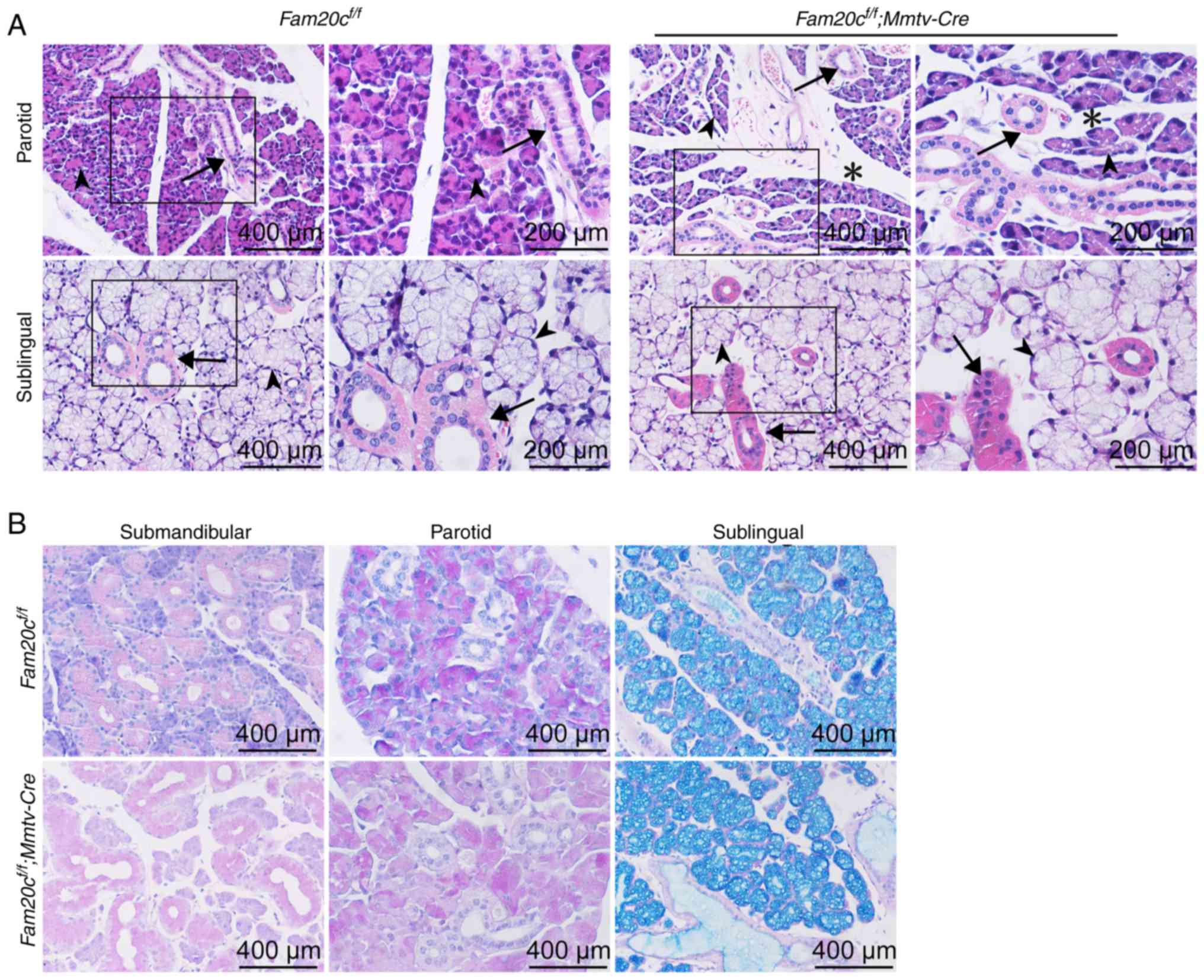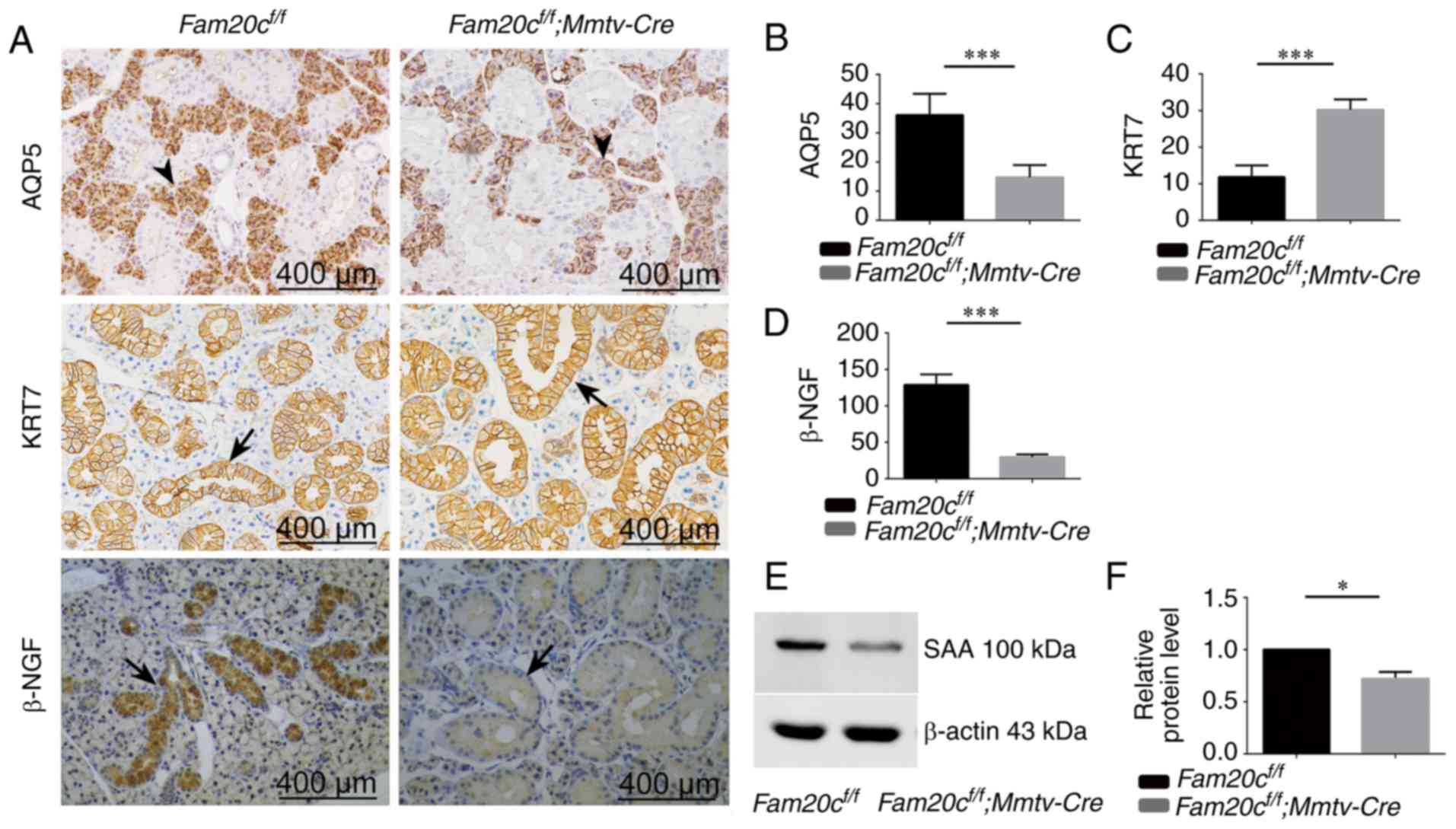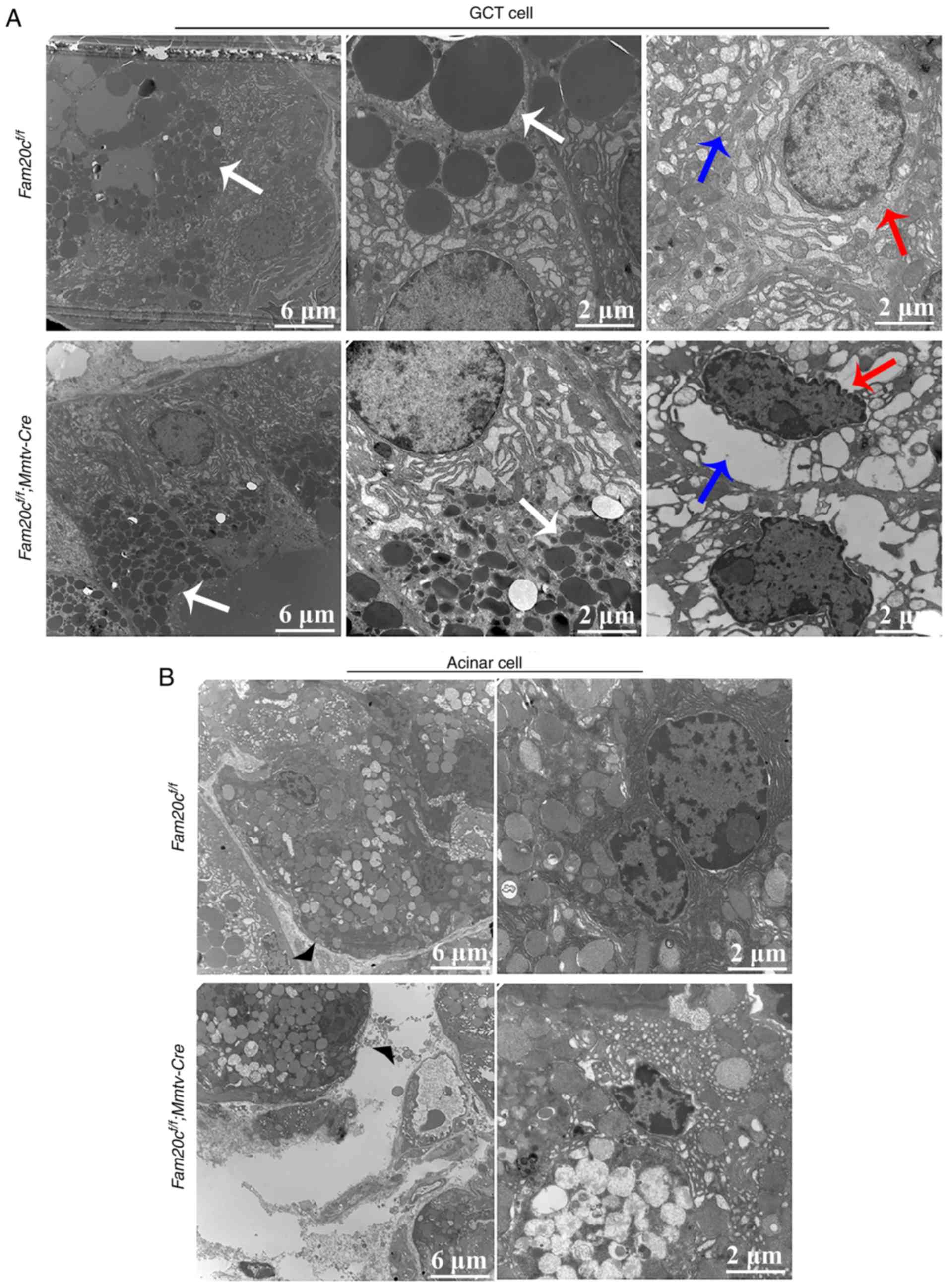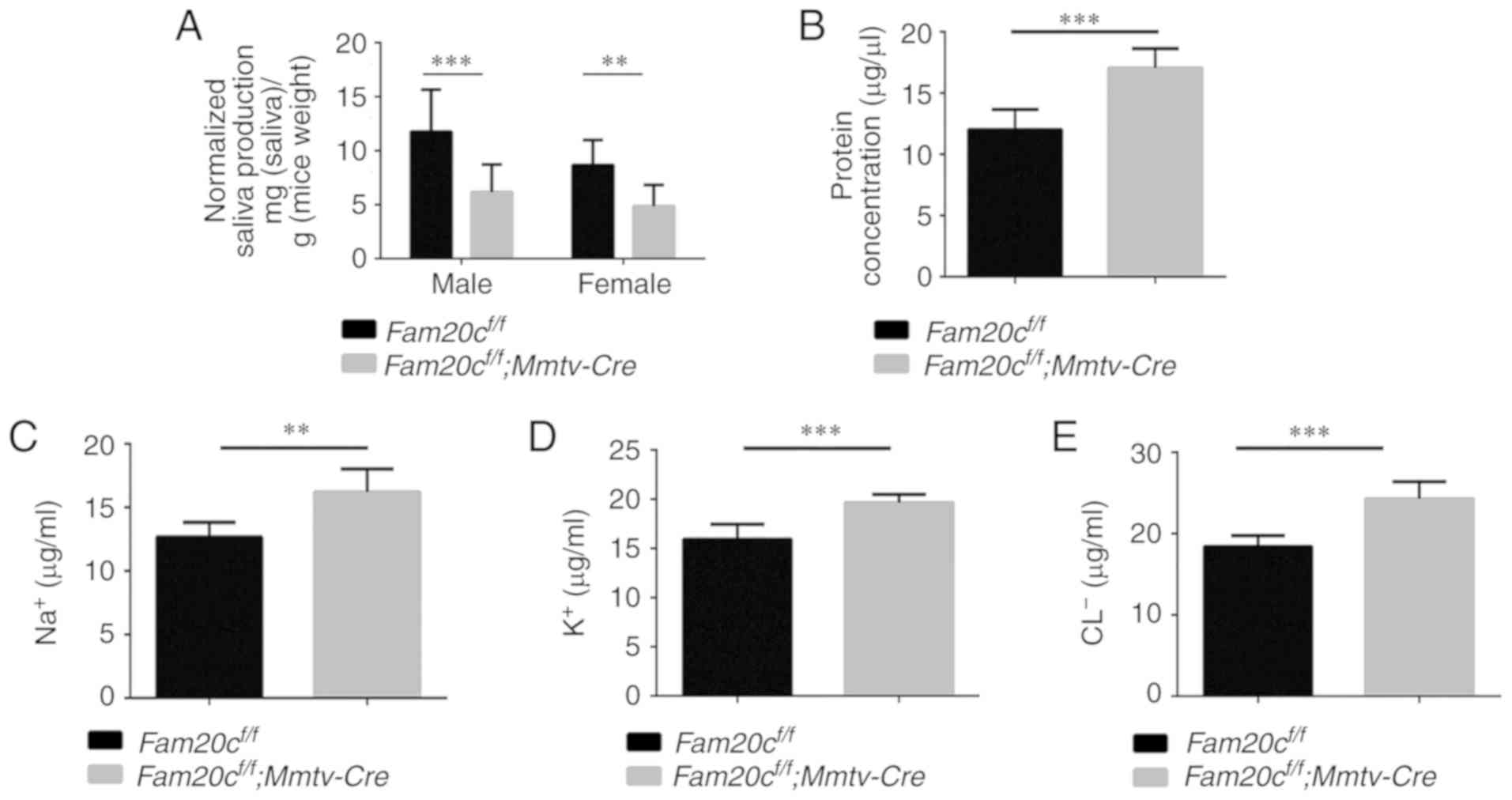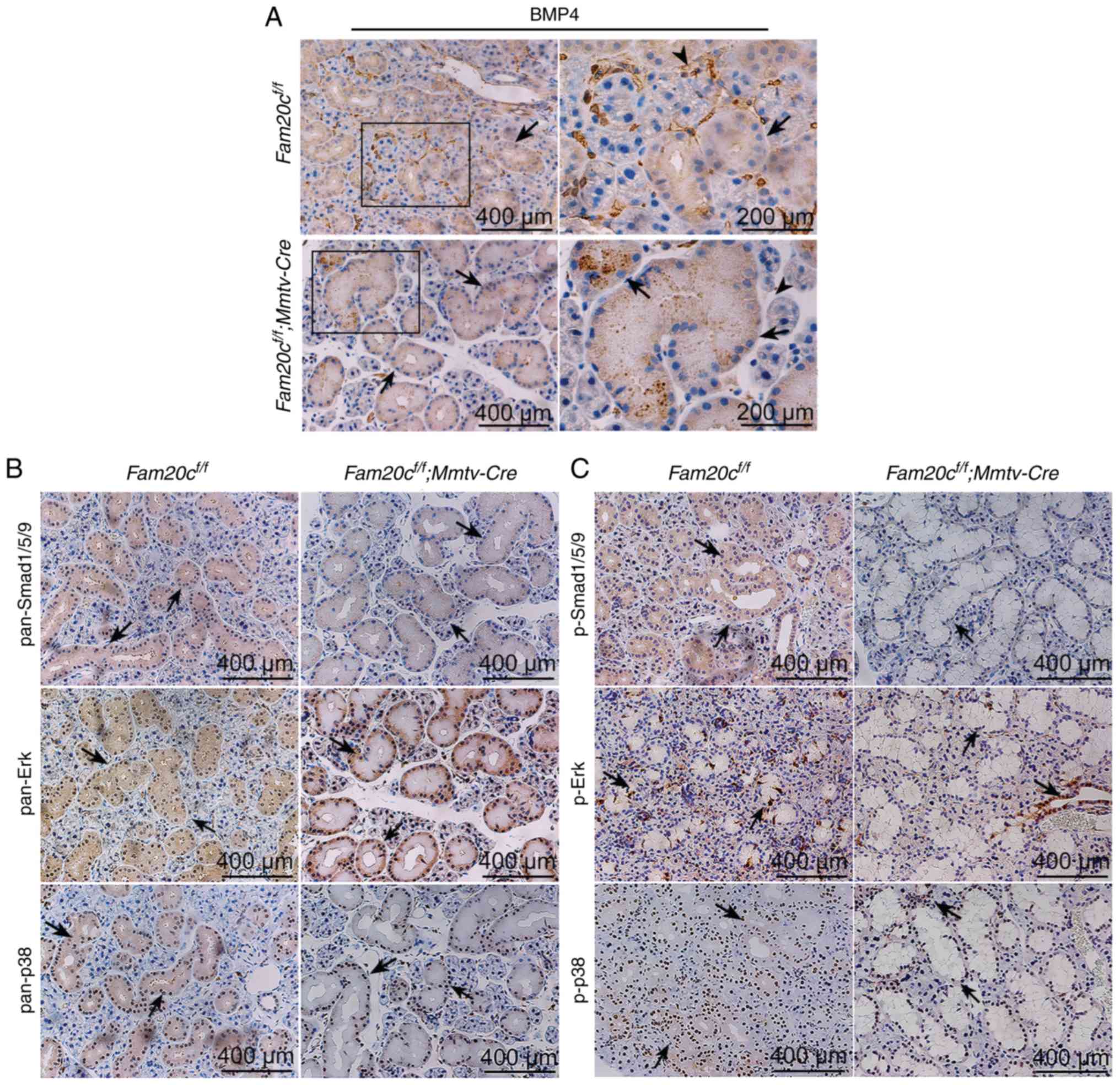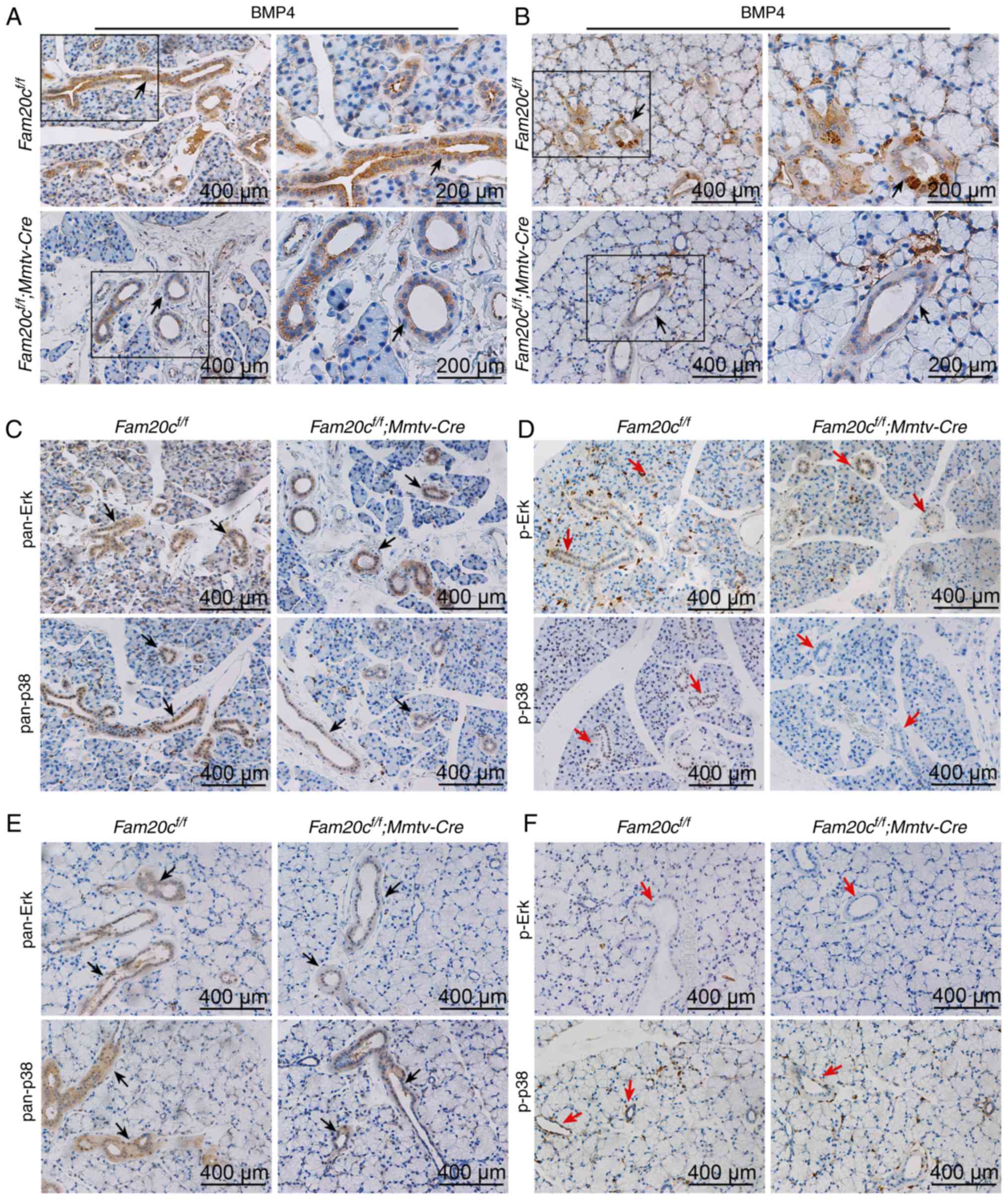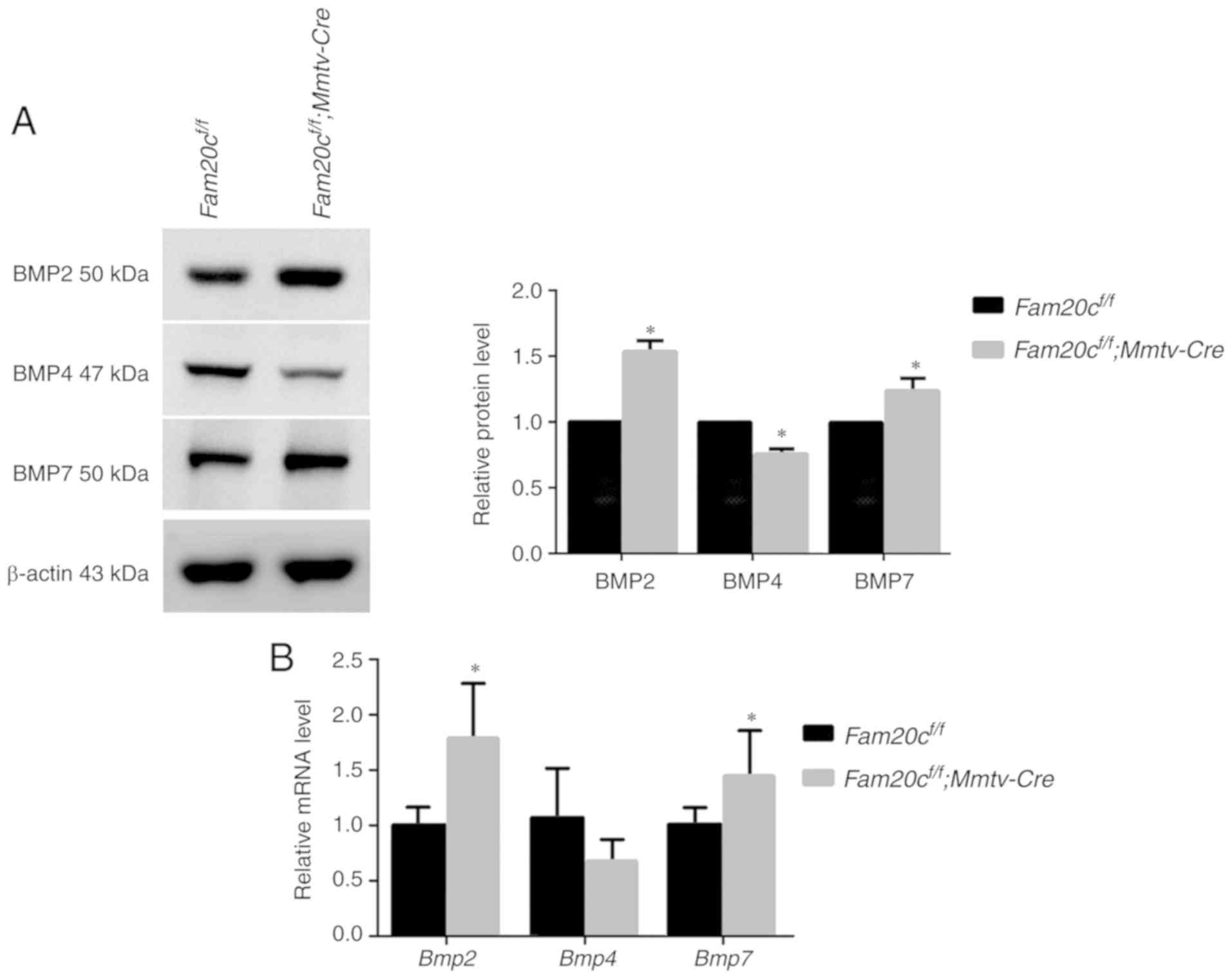|
1
|
Fox PC: Autoimmune diseases and Sjogren's
syndrome: An autoimmune exocrinopathy. Ann NY Acad Sci. 1098:15–21.
2007. View Article : Google Scholar : PubMed/NCBI
|
|
2
|
Shiboski CH, Hodgson TA, Ship JA and
Schiødt M: Management of salivary hypofunction during and after
radiotherapy. Oral Surg Oral Med Oral Pathol Oral Radiol Endod.
103(Suppl): S66.e61–e19. 2007. View Article : Google Scholar
|
|
3
|
Nederfors T: Xerostomia and
hyposalivation. Adv Dent Res. 14:48–56. 2000. View Article : Google Scholar
|
|
4
|
Napeñas JJ, Brennan MT and Fox PC:
Diagnosis and treatment of xerostomia (dry mouth). Odontology.
97:76–83. 2009. View Article : Google Scholar : PubMed/NCBI
|
|
5
|
Tucker AS: Salivary gland development.
Semin Cell Dev Biol. 18:237–244. 2007. View Article : Google Scholar : PubMed/NCBI
|
|
6
|
Patel VN, Rebustini IT and Hoffman MP:
Salivary gland branching morphogenesis. Differentiation.
74:349–364. 2006. View Article : Google Scholar : PubMed/NCBI
|
|
7
|
Harunaga J, Hsu JC and Yamada KM: Dynamics
of salivary gland morphogenesis. J Dent Res. 90:1070–1077. 2011.
View Article : Google Scholar : PubMed/NCBI
|
|
8
|
Heine U, Munoz EF, Flanders KC,
Ellingsworth LR, Lam HY, Thompson NL, Roberts AB and Sporn MB: Role
of transforming growth factor-beta in the development of the mouse
embryo. J Cell Biol. 105:2861–2876. 1987. View Article : Google Scholar : PubMed/NCBI
|
|
9
|
Hoffman MP, Kidder BL, Steinberg ZL,
Lakhani S, Ho S, Kleinman HK and Larsen M: Gene expression profiles
of mouse submandibular gland development: FGFR1 regulates branching
morphogenesis in vitro through BMP- and FGF-dependent mechanisms.
Development. 129:5767–5778. 2002. View Article : Google Scholar : PubMed/NCBI
|
|
10
|
Jaskoll T, Zhou YM, Chai Y, Makarenkova
HP, Collinson JM, West JD, Hajihosseini MK, Lee J and Melnick M:
Embryonic submandibular gland morphogenesis: Stage-specific protein
localization of FGFs, BMPs, Pax6 and Pax9 in normal mice and
abnormal SMG phenotypes in FgfR2-IIIc(+/Delta), BMP7(−/−) and
Pax6(−/−) mice. Cells Tissues Organs. 170:83–98. 2002. View Article : Google Scholar
|
|
11
|
Tagliabracci VS, Engel JL, Wen J, Wiley
SE, Worby CA, Kinch LN, Xiao J, Grishin NV and Dixon JE: Secreted
kinase phosphorylates extracellular proteins that regulate
biomineralization. Science. 336:1150–1153. 2012. View Article : Google Scholar : PubMed/NCBI
|
|
12
|
Hao J, Narayanan K, Muni T, Ramachandran A
and George A: Dentin matrix protein 4, a novel secretory
calcium-binding protein that modulates odontoblast differentiation.
J Biol Chem. 282:15357–15365. 2007. View Article : Google Scholar : PubMed/NCBI
|
|
13
|
Ishikawa HO, Xu A, Ogura E, Manning G and
Irvine KD: The Raine syndrome protein FAM20C is a Golgi kinase that
phosphorylates bio-mineralization proteins. PLoS One. 7:e429882012.
View Article : Google Scholar : PubMed/NCBI
|
|
14
|
George A and Veis A: Phosphorylated
proteins and control over apatite nucleation, crystal growth, and
inhibition. Chem Rev. 108:4670–4693. 2008. View Article : Google Scholar : PubMed/NCBI
|
|
15
|
Tagliabracci VS, Xiao J and Dixon JE:
Phosphorylation of substrates destined for secretion by the Fam20
kinases. Biochem Soc Trans. 41:1061–1065. 2013. View Article : Google Scholar : PubMed/NCBI
|
|
16
|
Tagliabracci VS, Wiley SE, Guo X, Kinch
LN, Durrant E, Wen J, Xiao J, Cui J, Nguyen KB, Engel JL, et al: A
Single Kinase Generates the Majority of the Secreted
Phosphoproteome. Cell. 161:1619–1632. 2015. View Article : Google Scholar : PubMed/NCBI
|
|
17
|
Simpson MA, Hsu R, Keir LS, Hao J,
Sivapalan G, Ernst LM, Zackai EH, Al-Gazali LI, Hulskamp G,
Kingston HM, et al: Mutations in FAM20C are associated with lethal
osteosclerotic bone dysplasia (Raine syndrome), highlighting a
crucial molecule in bone development. Am J Hum Genet. 81:906–912.
2007. View
Article : Google Scholar : PubMed/NCBI
|
|
18
|
Acevedo AC, Poulter JA, Alves PG, de Lima
CL, Castro LC, Yamaguti PM, Paula LM, Parry DA, Logan CV, Smith CE,
et al: Variability of systemic and orodental phenotype in two
families with non-lethal Raine syndrome with FAM20C mutations. BMC
Med Genet. 16:82015. View Article : Google Scholar
|
|
19
|
Seidahmed MZ, Alazami AM, Abdelbasit OB,
Al Hussein K, Miqdad AM, Abu-Sa'da O, Mustafa T, Bahjat S and
Alkuraya FS: Report of a case of Raine syndrome and literature
review. Am J Med Genet A. 167A:2394–2398. 2015. View Article : Google Scholar : PubMed/NCBI
|
|
20
|
Raine J, Winter RM, Davey A and Tucker SM:
Unknown syndrome: Microcephaly, hypoplastic nose, exophthalmos, gum
hyperplasia, cleft palate, low set ears, and osteosclerosis. J Med
Genet. 26:786–788. 1989. View Article : Google Scholar : PubMed/NCBI
|
|
21
|
Wang X, Hao J, Xie Y, Sun Y, Hernandez B,
Yamoah AK, Prasad M, Zhu Q, Feng JQ and Qin C: Expression of FAM20C
in the osteogenesis and odontogenesis of mouse. J Histochem
Cytochem. 58:957–967. 2010. View Article : Google Scholar : PubMed/NCBI
|
|
22
|
Du EX, Wang XF, Yang WC, Kaback D, Yee SP,
Qin CL, George A and Hao JJ: Characterization of Fam20C expression
in odontogenesis and osteogenesis using transgenic mice. Int J Oral
Sci. 7:89–94. 2015. View Article : Google Scholar
|
|
23
|
Wang X, Wang S, Lu Y, Gibson MP, Liu Y,
Yuan B, Feng JQ and Qin C: FAM20C plays an essential role in the
formation of murine teeth. J Biol Chem. 287:35934–35942. 2012.
View Article : Google Scholar : PubMed/NCBI
|
|
24
|
Vogel P, Hansen GM, Read RW, Vance RB,
Thiel M, Liu J, Wronski TJ, Smith DD, Jeter-Jones S and Brommage R:
Amelogenesis imperfecta and other biomineralization defects in
Fam20a and Fam20c null mice. Vet Pathol. 49:998–1017. 2012.
View Article : Google Scholar : PubMed/NCBI
|
|
25
|
Tibaldi E, Arrigoni G, Brunati AM, James P
and Pinna LA: Analysis of a sub-proteome which co-purifies with and
is phosphorylated by the Golgi casein kinase. Cell Mol Life Sci.
63:378–389. 2006. View Article : Google Scholar : PubMed/NCBI
|
|
26
|
Jernvall J and Thesleff I: Reiterative
signaling and patterning during mammalian tooth morphogenesis. Mech
Dev. 92:19–29. 2000. View Article : Google Scholar : PubMed/NCBI
|
|
27
|
Wagner KU, McAllister K, Ward T, Davis B,
Wiseman R and Hennighausen L: Spatial and temporal expression of
the Cre gene under the control of the MMTV-LTR in different lines
of transgenic mice. Transgenic Res. 10:545–553. 2001. View Article : Google Scholar
|
|
28
|
Ewald D, Li M, Efrat S, Auer G, Wall RJ,
Furth PA and Hennighausen L: Time-sensitive reversal of hyperplasia
in transgenic mice expressing SV40 T antigen. Science.
273:1384–1386. 1996. View Article : Google Scholar : PubMed/NCBI
|
|
29
|
Wagner KU, Wall RJ, St-Onge L, Gruss P,
Wynshaw-Boris A, Garrett L, Li M, Furth PA and Hennighausen L:
Cre-mediated gene deletion in the mammary gland. Nucleic Acids Res.
25:4323–4330. 1997. View Article : Google Scholar : PubMed/NCBI
|
|
30
|
Wang X, Wang S, Li C, Gao T, Liu Y,
Rangiani A, Sun Y, Hao J, George A, Lu Y, et al: Inactivation of a
novel FGF23 regulator, FAM20C, leads to hypophosphatemic rickets in
mice. PLoS Genet. 8:e10027082012. View Article : Google Scholar : PubMed/NCBI
|
|
31
|
Livak KJ and Schmittgen TD: Analysis of
relative gene expression data using real-time quantitative PCR and
the 2(−Delta Delta C(T)) method. Methods. 25:402–408. 2001.
View Article : Google Scholar
|
|
32
|
Romanenko VG, Nakamoto T, Srivastava A,
Begenisich T and Melvin JE: Regulation of membrane potential and
fluid secretion by Ca2+-activated K+ channels
in mouse submandibular glands. J Physiol. 581:801–817. 2007.
View Article : Google Scholar : PubMed/NCBI
|
|
33
|
Nalbant D, Youn H, Nalbant SI, Sharma S,
Cobos E, Beale EG, Du Y and Williams SC: FAM20: An evolutionarily
conserved family of secreted proteins expressed in hematopoietic
cells. BMC Genomics. 6:112005. View Article : Google Scholar : PubMed/NCBI
|
|
34
|
Gresik EW: The granular convoluted tubule
(GCT) cell of rodent submandibular glands. Microsc Res Tech.
27:1–24. 1994. View Article : Google Scholar : PubMed/NCBI
|
|
35
|
Ma T, Song Y, Gillespie A, Carlson EJ,
Epstein CJ and Verkman AS: Defective secretion of saliva in
transgenic mice lacking aquaporin-5 water channels. J Biol Chem.
274:20071–20074. 1999. View Article : Google Scholar : PubMed/NCBI
|
|
36
|
Krane CM, Melvin JE, Nguyen HV, Richardson
L, Towne JE, Doetschman T and Menon AG: Salivary acinar cells from
aquaporin 5-deficient mice have decreased membrane water
permeability and altered cell volume regulation. J Biol Chem.
276:23413–23420. 2001. View Article : Google Scholar : PubMed/NCBI
|
|
37
|
Penschow JD, Drinkwater CC, Haralambidis J
and Coghlan JP: Sites of expression and induction of glandular
kallikrein gene expression in mice. Mol Cell Endocrinol.
81:135–146. 1991. View Article : Google Scholar : PubMed/NCBI
|
|
38
|
Smith FJ, Porter RM, Corden LD, Lunny DP,
Lane EB and McLean WH: Cloning of human, murine, and marsupial
keratin 7 and a survey of K7 expression in the mouse. Biochem
Biophys Res Commun. 297:818–827. 2002. View Article : Google Scholar : PubMed/NCBI
|
|
39
|
Melnick M and Jaskoll T: Mouse
submandibular gland morphogenesis: A paradigm for embryonic signal
processing. Crit Rev Oral Biol Med. 11:199–215. 2000. View Article : Google Scholar
|
|
40
|
Jaskoll T, Chen H, Min Zhou Y, Wu D and
Melnick M: Developmental expression of survivin during embryonic
submandibular salivary gland development. BMC Dev Biol. 1:52001.
View Article : Google Scholar : PubMed/NCBI
|
|
41
|
Fiaschi M, Kolterud A, Nilsson M, Toftgård
R and Rozell B: Targeted expression of GLI1 in the salivary glands
results in an altered differentiation program and hyperplasia. Am J
Pathol. 179:2569–2579. 2011. View Article : Google Scholar : PubMed/NCBI
|
|
42
|
Barka T: Biologically active polypeptides
in submandibular glands. J Histochem Cytochem. 28:836–859. 1980.
View Article : Google Scholar : PubMed/NCBI
|
|
43
|
Yoshida S, Ohbo K, Takakura A, Takebayashi
H, Okada T, Abe K and Nabeshima Y: Sgn1, a basic helix-loop-helix
transcription factor delineates the salivary gland duct cell
lineage in mice. Dev Biol. 240:517–530. 2001. View Article : Google Scholar
|
|
44
|
Yamagishi R, Wakayama T, Nakata H,
Adthapanyawanich K, Kumchantuek T, Yamamoto M and Iseki S:
Expression and localization of alpha-amylase in the submandibular
and sublingual glands of mice. Acta Histochem Cytochem. 47:95–102.
2014. View Article : Google Scholar : PubMed/NCBI
|
|
45
|
Marchetti L, Gabrielli MG, Materazzi G and
Menghi G: Cellular compartmentation of lysozyme and alpha-amylase
in the mouse salivary glands. Immunogold approaches at light and
electron microscopy level. Histol Histopathol. 15:337–346.
2000.PubMed/NCBI
|
|
46
|
Menghi G, Marchetti L, Bondi AM, Accili D,
Sabbieti MG and Materazzi G: Double-sided staining with a gold
probe and silver enhancement to detect alpha-amylase and sugar
moieties in the mouse salivary glands. Histol Histopathol.
14:687–695. 1999.PubMed/NCBI
|
|
47
|
Smith RJ and Frommer J: Effects of
prepubertal castration on development of granular tubules and
amylase activity in the male mouse submandibular gland. Arch Oral
Biol. 17:1561–1571. 1972. View Article : Google Scholar : PubMed/NCBI
|
|
48
|
Gresik EW: The postnatal development of
the sexually dimorphic duct system and of amylase activity in the
submandibular glands of mice. Cell Tissue Res. 157:411–422. 1975.
View Article : Google Scholar : PubMed/NCBI
|
|
49
|
Morgan-Bathke M, Lin HH, Chibly AM, Zhang
W, Sun X, Chen CH, Flodby P, Borok Z, Wu R, Arnett D, et al:
Deletion of ATG5 shows a role of autophagy in salivary homeostatic
control. J Dent Res. 92:911–917. 2013. View Article : Google Scholar : PubMed/NCBI
|
|
50
|
Deretic V, Jiang S and Dupont N: Autophagy
intersections with conventional and unconventional secretion in
tissue development, remodeling and inflammation. Trends Cell Biol.
22:397–406. 2012. View Article : Google Scholar : PubMed/NCBI
|
|
51
|
Dikeakos JD and Reudelhuber TL: Sending
proteins to dense core secretory granules: Still a lot to sort out.
J Cell Biol. 177:191–196. 2007. View Article : Google Scholar : PubMed/NCBI
|
|
52
|
Musselmann K, Green JA, Sone K, Hsu JC,
Bothwell IR, Johnson SA, Harunaga JS, Wei Z and Yamada KM: Salivary
gland gene expression atlas identifies a new regulator of branching
morphogenesis. J Dent Res. 90:1078–1084. 2011. View Article : Google Scholar : PubMed/NCBI
|















